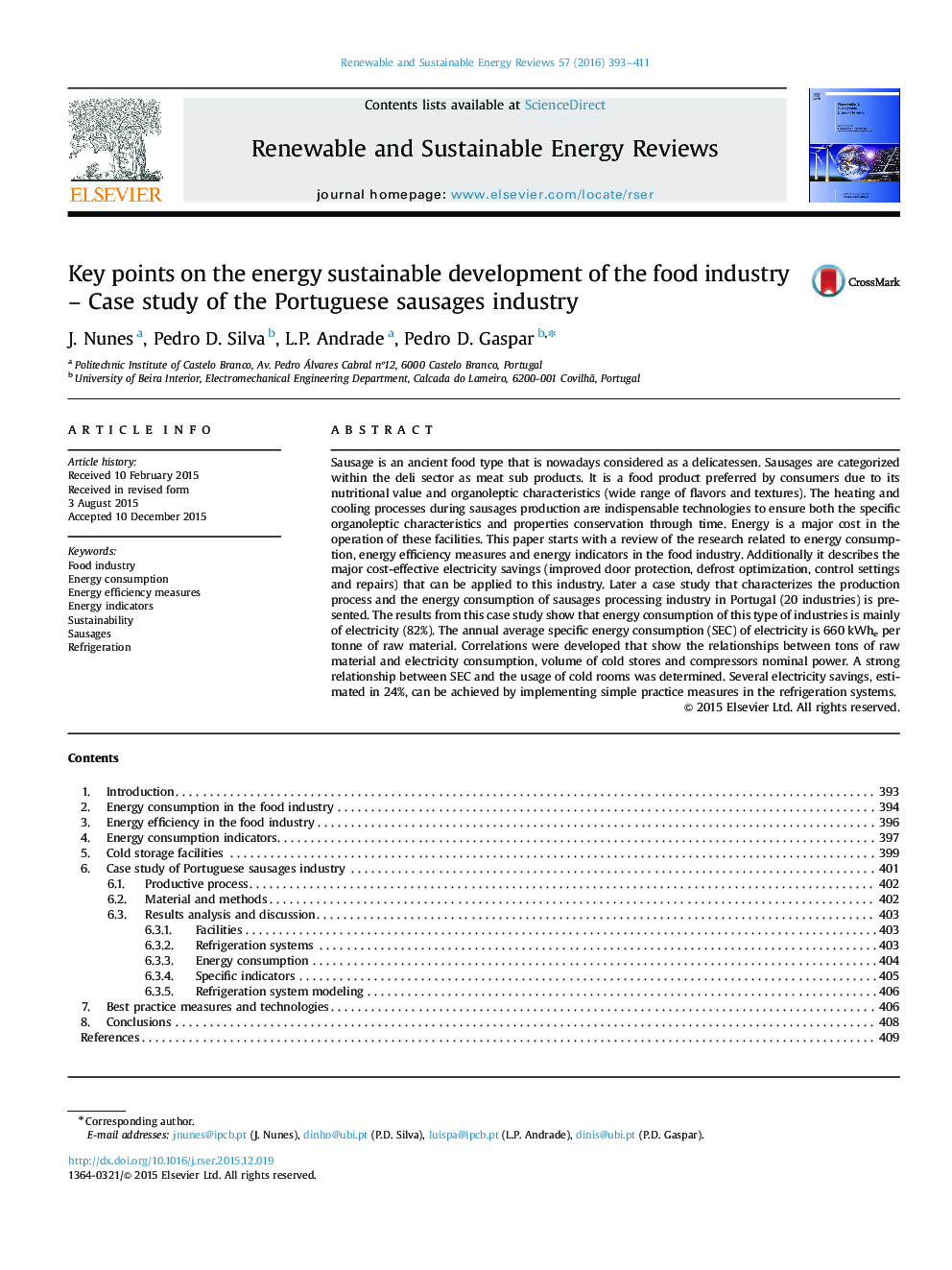| Article ID | Journal | Published Year | Pages | File Type |
|---|---|---|---|---|
| 8114553 | Renewable and Sustainable Energy Reviews | 2016 | 19 Pages |
Abstract
Sausage is an ancient food type that is nowadays considered as a delicatessen. Sausages are categorized within the deli sector as meat sub products. It is a food product preferred by consumers due to its nutritional value and organoleptic characteristics (wide range of flavors and textures). The heating and cooling processes during sausages production are indispensable technologies to ensure both the specific organoleptic characteristics and properties conservation through time. Energy is a major cost in the operation of these facilities. This paper starts with a review of the research related to energy consumption, energy efficiency measures and energy indicators in the food industry. Additionally it describes the major cost-effective electricity savings (improved door protection, defrost optimization, control settings and repairs) that can be applied to this industry. Later a case study that characterizes the production process and the energy consumption of sausages processing industry in Portugal (20 industries) is presented. The results from this case study show that energy consumption of this type of industries is mainly of electricity (82%). The annual average specific energy consumption (SEC) of electricity is 660Â kWhe per tonne of raw material. Correlations were developed that show the relationships between tons of raw material and electricity consumption, volume of cold stores and compressors nominal power. A strong relationship between SEC and the usage of cold rooms was determined. Several electricity savings, estimated in 24%, can be achieved by implementing simple practice measures in the refrigeration systems.
Keywords
Related Topics
Physical Sciences and Engineering
Energy
Renewable Energy, Sustainability and the Environment
Authors
J. Nunes, Pedro D. Silva, L.P. Andrade, Pedro D. Gaspar,
